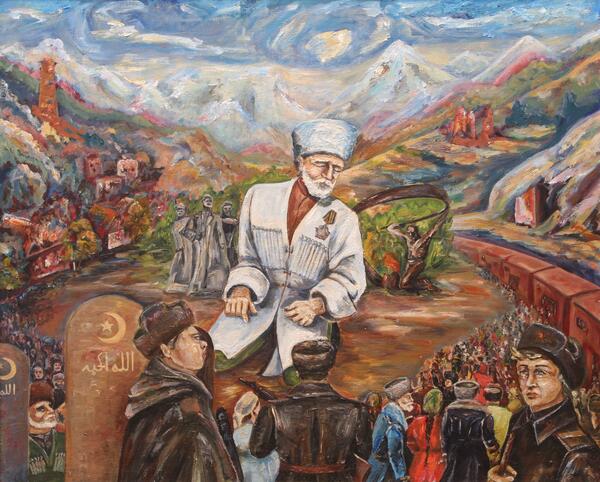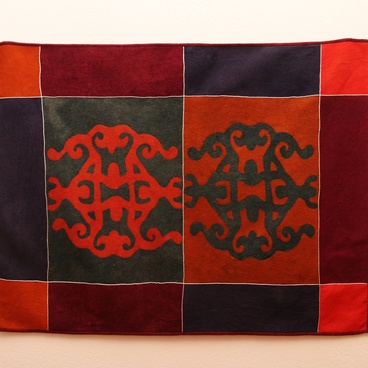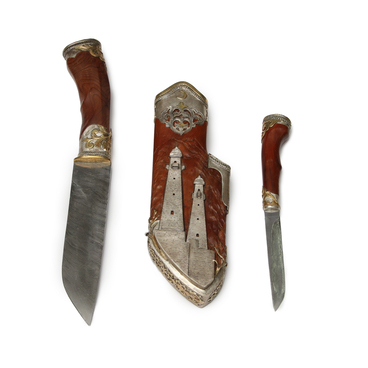Issa Aushev’s painting “Memory” refers to a very tragic time: the artist depicted the Stalinist deportation of the Ingush and Chechens. The peoples of the Caucasus call February 23, 1944 “The Black Wednesday” — it was on this day when NKVD soldiers with weapons in their hands began knocking on their doors from the very early morning. They forced them to go to the station with very few belongings. The echelons took the highlanders to Kazakhstan and Central Asia.
Memory
Время создания
the first half of the 21st century
Размер
72,5x90 cm
Техника
canvas, oil
Выставка
5
Открыть в приложении#1
Issa Aushev
Memory
#2
#5
“At each station, when the train stopped for 15–20 minutes, soldiers entered and checked whether someone died. People hid their dead relatives because they hoped to bury the bodies properly wherever they were going. <…> Of course, it is impossible to hide corpses for two or three weeks. At bigger stations, they were unloaded on the floor, and at smaller ones, where there were no facilities, people buried their loved ones directly in the snow. They always read a prayer, but only later, on the train.”
Writer Issa Kodzoev recalled the hardest days on the road
#4
In the center of the painting “Memory, ” the artist depicted an old man in a light gray Circassian coat and a papakha (traditional headdress). He has an order with the ribbon of Saint George on his chest: it means that he had participated in battles against the Nazi troops in the Great Patriotic War. The veteran survived many battles, but after returning from the front, he faced death again — this time due to repressions.
The artist depicted the old man on a prayer mat, addressing the Almighty. He closes his eyes to concentrate and asks Him for mercy. Around the hero, images twinkle, like memory flashbacks: a crowd of people slowly heads towards the train, they are urged on by people in the uniform.
Two important symbols are depicted behind the praying person. On the left, the author depicted the sculpture “Friendship of Peoples” with figures of a Russian, an Ingush, and a Chechen who fought together for the ideals of the revolution. On the right, one can see a monument to firefighters — they died in Grozny while under fire from German aircrafts in 1942. In the foreground, the artist depicted a tombstone with the symbol of Islam: a crescent moon and a star. Below is the inscription, which translates as “Allah is great”.
Overall, these images help to better understand the meaning of the subject matter: the artist conveyed the horror of the inhuman policies during Stalinist repressions, but above all, Issa Aushev emphasized the figure of the old man — as a symbol of perseverance, faith in God, faith in the friendship of peoples, and in the self-sacrifice of people in the name of loved ones.
Issa Aushev is a People’s Artist of the Republic of Ingushetia. His first personal exhibition was held in the military unit, where Issa served in the USSR Armed Forces in Czechoslovakia from 1977 to 1980. In 1980, he was awarded the Brotherhood in Arms medal for his artistic talent.
The artist depicted the old man on a prayer mat, addressing the Almighty. He closes his eyes to concentrate and asks Him for mercy. Around the hero, images twinkle, like memory flashbacks: a crowd of people slowly heads towards the train, they are urged on by people in the uniform.
Two important symbols are depicted behind the praying person. On the left, the author depicted the sculpture “Friendship of Peoples” with figures of a Russian, an Ingush, and a Chechen who fought together for the ideals of the revolution. On the right, one can see a monument to firefighters — they died in Grozny while under fire from German aircrafts in 1942. In the foreground, the artist depicted a tombstone with the symbol of Islam: a crescent moon and a star. Below is the inscription, which translates as “Allah is great”.
Overall, these images help to better understand the meaning of the subject matter: the artist conveyed the horror of the inhuman policies during Stalinist repressions, but above all, Issa Aushev emphasized the figure of the old man — as a symbol of perseverance, faith in God, faith in the friendship of peoples, and in the self-sacrifice of people in the name of loved ones.
Issa Aushev is a People’s Artist of the Republic of Ingushetia. His first personal exhibition was held in the military unit, where Issa served in the USSR Armed Forces in Czechoslovakia from 1977 to 1980. In 1980, he was awarded the Brotherhood in Arms medal for his artistic talent.
#3
Ministry of Culture of the Russian Federation
читать дальшескрыть
00:00
00:00
1x
Memory
Время создания
the first half of the 21st century
Размер
72,5x90 cm
Техника
canvas, oil
Выставка
5
Открыть в приложении
Поделиться




